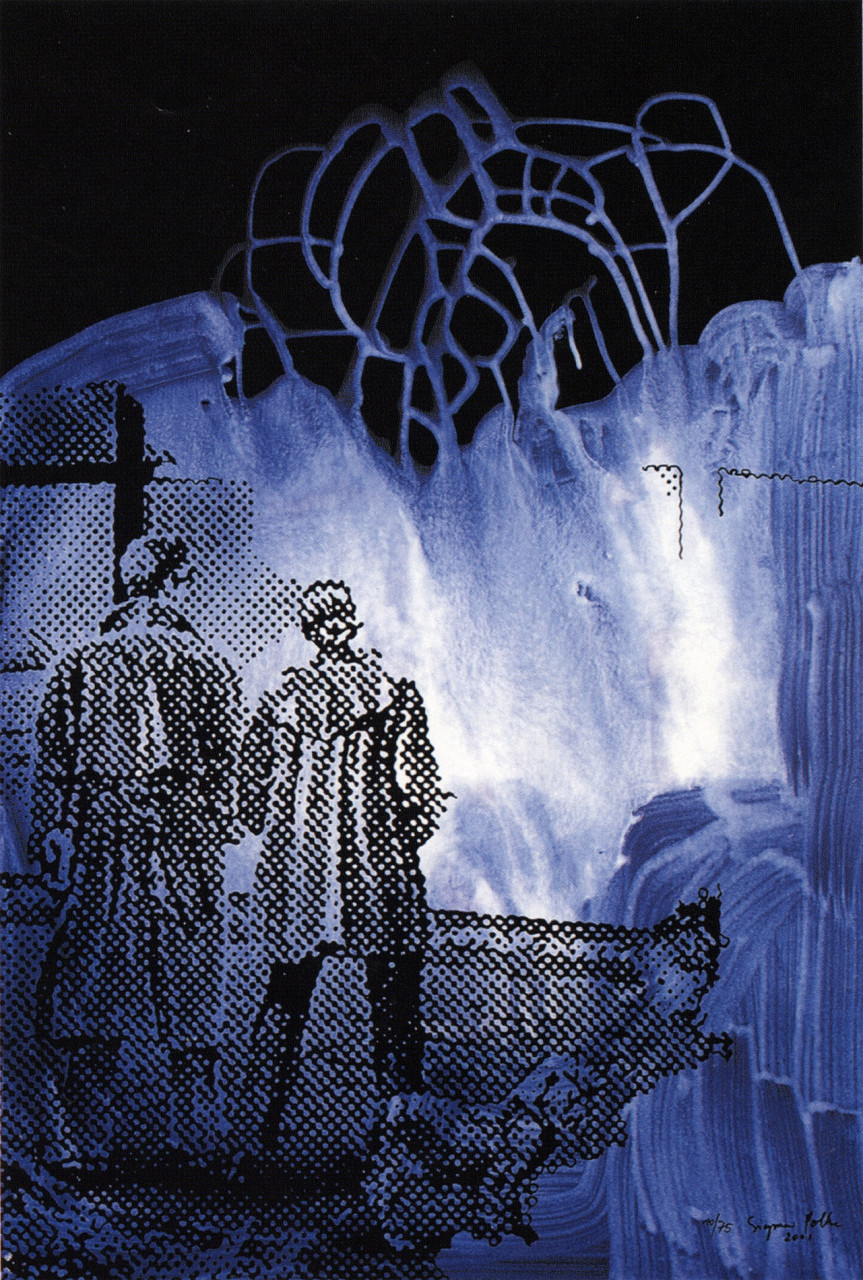Sigmar Polke
Sigmar Polke, born 1941 in Oels, Germany (now Oleśnica, Poland), lived and worked in Cologne, Germany. A founding figure of the 1960s movement Capitalist Realism, alongside Gerhard Richter, Polke critiqued consumer culture and mass media through a wide array of techniques, including painting, photography, and printmaking. He frequently combined imagery from popular culture with abstract forms, employing unorthodox materials such as chemicals, fabric, and pigments that reacted unpredictably. Polke’s work is marked by irony, ambiguity, and a deep skepticism toward authority and artistic conventions, making him one of the most influential and enigmatic figures in postwar European art.
Sigmar Polke Editions

Preisvergleich
2001

S. schmeckt Pfirsich von H.
1996

Der erste Schnitt, Der zweite Fall, Der dritte Stand
1995

Preisvergleich
2001
Offset lithograph/silkscreen on card stock, 100.5 x 69 cm (39.5 x 27 in). Edition of 75, signed and numbered.
This edition by Sigmar Polke exemplifies his distinctive fusion of imagery, technique, and critique. In this work, Polke juxtaposes a halftone print of two figures with expressive, gestural layers of translucent blue and white paint. Overlaid with a web-like abstract form at the top, the composition becomes both cryptic and theatrical. The title, Preisvergleich (“Price Comparison”), hints at the absurdity of consumer logic and value systems, underscoring Polke’s ongoing critique of capitalism and visual culture. As in much of his later work, the piece blurs boundaries between figuration and abstraction, mechanical reproduction and painterly intervention, inviting viewers to question what is seen, known, and commodified.
EUR 11,000
S. schmeckt Pfirsich von H.
1996
Grano lithograph, embossing, on rag paper, 59 x 77 cm (23¼ x 30¼ in). Edition of 60 + X, signed and numbered.
Sigmar Polke’s S. schmeckt Pfirsich von H. is a playful and enigmatic limited edition print that exemplifies the artist’s signature fusion of figuration and abstraction. The composition teems with fragmented forms and layered textures – faces, silhouettes, and whimsical doodles – all colliding in a vibrant, almost chaotic interplay. Polke’s use of intense color, his signature halftone printing, and expressive marks destabilizes any single reading, inviting viewers to unravel their own narratives. The title (“S. tastes H.’s peach”) adds a provocative, surreal edge, teasing themes of desire, perception, and ambiguity. As in much of Polke’s work, meaning remains fluid, reflecting his enduring interest in how images function and mislead in a world saturated with visual stimuli.

Der erste Schnitt, Der zweite Fall, Der dritte Stand
1995
Set of 3 screenprints, each print 54.5 x 75 cm (21½ x 29½ in), each signed and numbered. Edition of 60.
In this triptych edition, Sigmar Polke juxtaposes monochrome imagery with bold geometric interventions – bright yellow and red bands that slice across the compositions like graphic intrusions. The titles (“The First Cut,” “The Second Case,” “The Third State”) suggest a progression or sequence, yet remain deliberately open-ended, mirroring the ambiguity in the images themselves. Polke’s characteristic use of halftone printing, distortion, and overlay destabilizes narrative clarity, inviting viewers to reflect on how image, history, and interpretation intersect. The work speaks to his enduring interest in breaking visual codes and questioning the structures through which we perceive and assign meaning.
